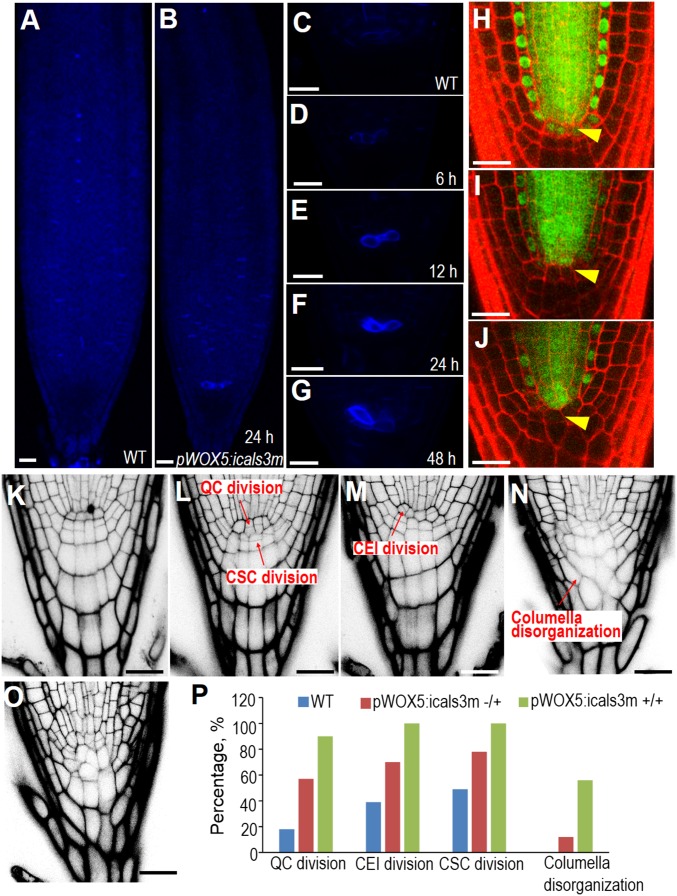Fig. 1.
Symplastic communication is essential for SCN maintenance. (A–G) Callose staining of WT (A and C) and pWOX5:icals3m (B, D–G) after 10-μM estradiol induction for 6 h (D), 12 h (E), 24 h (B and F), and 48 h (G). Note the specific deposition of callose in the QC position in B, D, and E. (H–J) Confocal images of roots expressing the pSHR:SHR-GFP transgene before (H) and after (I and J) induction of pWOX5:icals3m for 24 h (I) and 48 h (J), respectively. Arrowheads indicate the QC position. (K–O) Phenotypes of pWOX5:icals3m-expressing roots (L–O) compared with WT (K) after 48-h induction in 10 μM estradiol medium. (L–N) the classification of observed phenotypes. (P) The quantification of the percentage of each phenotype among WT (n = 28), heterozygous pWOX5:icals3m (+/−) (n = 56) (represented by L and M), and homozygous pWOX5:icals3m (+/+) (n = 48) roots (represented by N and O). “n” represents the total number of roots used for quantification. (Scale bars, 20 μm.)

